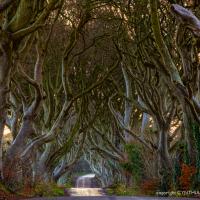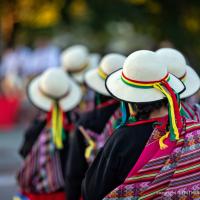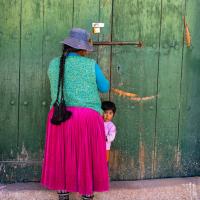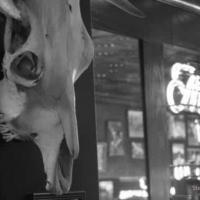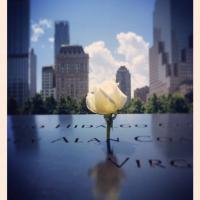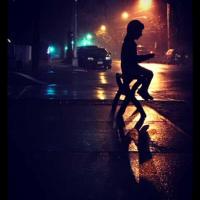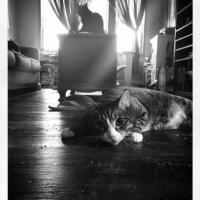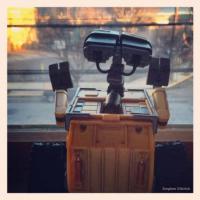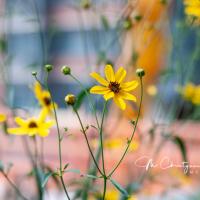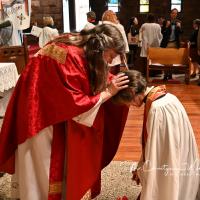
As the COVID-19 pandemic has forced people across the world to shelter in place, many have turned to the arts for entertainment, solace and inspiration. The VOICE Online is profiling some of the many artists in the Diocese of Newark and sharing examples of their talents. This week’s article features photographers.
Cynthia Black
Rector, Church of the Redeemer, Morristown
“I’ve always appreciated light,” says the Rev. Cynthia Black. Sometimes she’ll stop in the middle of a worship service and tell the congregation: “Just look at that light!”
“I see light from a photographer’s perspective,” she said. “I can’t help but, when I see something just beautifully stunning, to stop and want other people to see it, too.”
Black has been capturing and sharing the light in photographs for most of her life. The daughter and granddaughter of avid photographers, she was snapping pictures of her own first on a Brownie box camera and then a Kodak Instamatic when she was 6 or 7.
“By the time I was 8 or 10, I was developing my own film. I never got into color darkroom work. It was always black and white. I think what that did was give me an appreciation for light, because, [with] black-and-white photography, it’s always variations on a theme of black or white and shadows and light.”
It’s a lesson relevant during the COVID-19 pandemic. “In a lot of people’s lives, there isn’t a lot of color right now,” Black said. “So being able to look for the light and find the light and be able to show the light is really important.
“But it’s also important to look at the shadows,” she added. Many photographers use an editing product called Lightroom, which allows them to adjust details like the level at which shadows are seen, she said. “Typically, you don’t want shadows to be just all black ... If you can bring out the shadows, that will make the image visually a lot more appealing.
“There’s some parallels in our lives today. If we can bring out the shadows and see what’s there, we can deal with it.”
Black engages with photography in various ways. She practices contemplative photography, which she describes as an abstract Zen photographic practice. “It’s an emptying of yourself, and it doesn’t produce images that would necessarily be anything you’d want to put in a gallery anywhere, but it does help you to see in [new] ways.”
She captures more gallery-worthy images during travels near and far. One of her favorite spots in the diocese is the Convent of St. John Baptist in Mendham. Recently, she has been photographing the beauty of spring during walks in her neighborhood and fresh tulips in her house.
“I like to capture beauty,” she said. “I want to share it and help others to see it.”
Sometimes, she shares that beauty in worship. Her photographs have provided the images for visual meditations at General Convention. During the current Zoom worship services at her church, she uses photographs to accompany the audio tracks of each week’s anthem. Recently, for example, she used photographs she took of birds in Costa Rica to accompany the song “His Eye is on the Sparrow.”
Through it all the light connects her photography and her faith.
The Black family crest contains the words Non crux sed lux, which means, “Not the cross, but the light.”
“I’ve always tried to look for the light,” she said. “It’s easy to get swallowed by the dark. But I think, especially during these times, what has been most important for me to remember and to share with my congregation is that light always follows dark. Always, the sun comes up.”
She recalled being disappointed if she arrived at her mother’s house on the coast of Maine when the tide was low, but then finding that tide soon would come in again.
“The light will always come. The tide will always come,” she said. “That’s the message of the gospel. That’s the message of the Resurrection. We don’t live in darkness. We can come into the light – not the cross, but the light.”
Stephen Dittrich
Member, Trinity Parish in Bergen Point, Bayonne
Stephen Dittrich intended to major in psychology at New Jersey City University. But when the school dropped its psychology department, “I took a photo class just for the heck of it.
“I fell in love with the idea of doing pictures and printing my own prints as well – not just shooting it and dropping it off at the store.” Doing the whole process, from shooting pictures to developing film and printing the photos, “really made it a lot more fun.”
Soon he was tackling everything from black-and-white to color photos; large, medium and small formats; and slides. He also used a photosensitive solution to create bluish cyanotype prints.
Photography “allowed me to look at the world in a different way,” Dittrich said. When he took that first photography class, “something just clicked.”
“You get to see little things, little details, not just the bigger thing,” he said. “You get to focus on something small ... and just build a world around it. It changed my whole view.”
There’s an intimacy to looking through a viewfinder and trying to capture what you see, he said. “It becomes almost personal.”
Looking at a photograph tells you something about the person who took it, and no two photographers view a subject the same way, he said.
“You don’t have to have a big, expensive camera to take a picture,” he noted. “I’ve seen people take pictures with pinhole cameras that are just phenomenal. So you shoot with what you have, and it’s the way you express yourself” that makes the difference.
Dittrich owns film and digital cameras, but these days he takes most of his photos with an iPhone11. “I just use my phone because it’s so easy, and it’s right there.”
While he enjoyed darkroom work with film, he doesn’t do much computer editing of his digital images. “I try not to retouch a lot of my stuff,” he said. “I just like the simple, raw image.”
His subject matter varies.
“Until I had kids, I took a lot of pictures of just outdoor scenes. I never really liked taking pictures of people that much, which is funny because I was a portrait photographer. Outside of work, I took pictures of everything else. ... Now, I take pictures of my kids all the time.”
Dittrich worked taking portraits for The Picture People. “I’ve posed large families of 20 or more, and I’ve done a tiny infant that’s maybe a month old.”
He also photographed pets, including alligators, birds and snakes. Occasionally he did weddings or other projects on his own. He once climbed a ladder to photograph 200 people at a summer camp. Another time he shot a fashion-show fundraiser for a high school prom. He particularly enjoyed a business trip to Dallas with other photographers, including one who did all of the advertising photos for the portrait company. “We just walked around Dallas together taking pictures.”
Dittrich sees a connection between the patience needed in both the photographic process and religious faith.
“You have to have patience” when taking pictures, he said. “You can’t willy-nilly just fire away.”
While digital photographers can shoot many photos and delete any they don’t like, he began as a film photographer, which limited how much he could shoot. “I learned to become very patient and look for that one shot you’re going to want to get. It takes that focus.”
Similarly, he said, “in order to have faith, you have to have patience.... You have to wait for it and work on it.”
Christy Ward
Member, Church of the Messiah, Chester
During the first few days of the government-mandated shutdown during the COVID-19 pandemic, Christy Ward thought: “What can I do to help?”
“What occurred to me was to take some of my pictures of the natural world ... I promised people I would put one up every day for 31 days.”
She posted the photos on various social media. “Around day 25, I started getting requests: ‘Please don’t stop this. Please don’t stop this.’”
So she kept going.
“The beautiful outdoor shots, as I call them, have fed my soul as much as they’ve helped anybody else. There have been several days where that ... two or three minutes I’m working on that has been the only bright spot in the day,” she said. Still, “the response I have gotten on all those different platforms has been heartwarming, to say the least.”
As owner of MC Ward Images, Ward photographs more people than nature shots. But her philosophy of capturing beauty transcends the subject matter.
“Whether I’m photographing people or I’m photographing nature doesn’t matter. I see beauty in everything,” she said. When people, especially women, lament that they hate pictures of themselves, “I say, ‘No, everybody has beauty.’ ...I see beauty in everything, and so my business is about photographing people, in part because I want that for people.”
She owns a picture of herself in a red velvet dress, taken when she was 5, that originally hung in her parents’ dining room. While growing up as one of nine children, she said, “I knew my parents loved me whenever I looked at that, or they never would have hung it. I want that for everybody.”
Although she photographs events such as weddings, she considers herself a “candid event photographer” rather than a wedding photographer.
“I want to capture all those special moments, especially the ones where people don’t even realize I’m there. That’s capturing the magic of the event.”
During the pandemic, Ward has been photographing graduation events in a new way. “I am working with parents of high school seniors to do safe distance photo shoots of their seniors to celebrate their seniors, since they’re going to miss out on their prom and their graduation.” She uses a long lens to keep a safe distance, and is able to incorporate family members into the photos as well.
She and three other photographers also joined together to offer an online beginner photo course using phone cameras.
Ward’s photographic beginning came at age 5, when she began taking pictures with a plastic Kodak camera. “I’ve had a camera in my hand pretty much ever since.”
She belonged to the “film club” in high school and participated in a juried exhibit at Delbarton School in Morris Township but didn’t pursue photography formally until years later when she left a job to return to school to study world religions. While there, she took a black-and-white film course in 2006.
“I had not been in the darkroom since high school,” she said. “That class changed my life. I have yet to get a degree in world religions. I do, however, have a degree in photography now. That was the beginning of my business.”




